Diffusion is the process by which chemicals move from an area of high concentration to areas of low concentration.
Small molecules such as carbon dioxide and oxygen move freely through the cell membrane. Large molecules, polar molecules or ions find it hard to move across the bilipid layer. Water moves freely through the cell membrane via protein channels called aquaporins. Aquaporins facilitate the quick passage of water across the membrane. Even without these aquaporins water is small enough to move slowly through the membrane even though it is a polar molecule. Water moving through a semi-permeable membrane from an area of high concentration to an area of low concentration is known as osmosis. Molecules that do not diffuse freely across the membrane can be absorbed through special mechanisms that facilitate and regulate their movement across the membrane.
Water is never transported actively; that is, it never moves against its concentration gradient by using energy. However, the concentration of water can be altered by the active transport of solutes such as sodium (Na+) and in this way the movement of water in and out of the cell can be controlled. Active transport will be discussed later.
Special proteins embedded in the membrane, called transport proteins, facilitate the movement of molecules, to cross the membrane and move down a concentration gradient. These proteins span the width of the membrane and simply provide a pore for the passage of solute. This process is called facilitated diffusion. This type of transport does not expend energy and is known as passive transport.
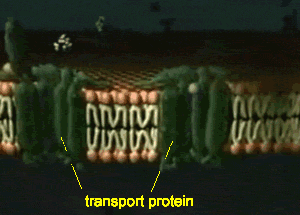
In contrast to the passive transport mentioned above, active transport requires the expenditure of energy by the cell. In this case a transport protein actively pumps solutes against the solute's concentration gradient. That is, the protein pumps the solute to the side where it is most concentrated. These proteins get their energy source from ATP.
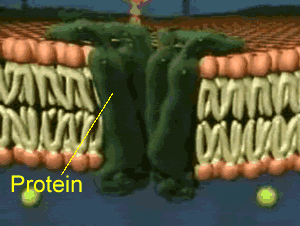
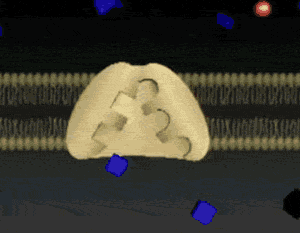
Large molecules, such as proteins, must enter and exit the cell via a different pathway. A cell uses a process called exocytosis to expel large molecules.
The process is shown on the right. Note how the contents are packaged in a membrane bound vesicle which fuses with the cell membrane to expel its contents.
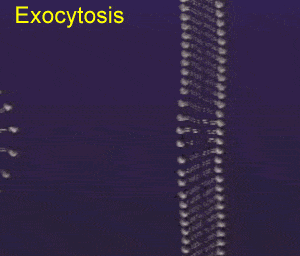
Endocytosis is the process by which the cell engulfs some of its extracellular fluid together with any dissolved or undissolved particles that may be contained in the extracellular fluid. During this process a portion of the plasma membrane projects out and surrounds an area of fluid to be ingested. The membrane is then pinched off forming a membrane-bounded vesicle called an endosome.
Three types of endocytosis take place.
- Pinocytosis where small drops of extracellular fluid
are ingested. This process takes place all the time.
- Phagocytosis which occurs in specialised cells and is the ingestion of undissolved particles in the extracellular fluid, such as bacteria as shown on the right.
- Receptor-mediated endocytosis which is beyond the scope of this article and will not be dealt with in any detail.
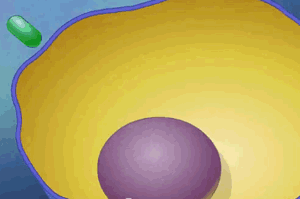
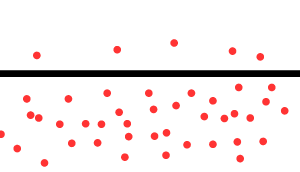
Consider the animation on the right. It shows solute been moved through the cell membrane. This is most likely
The solute moves :
